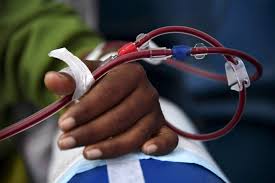Goodbye Dialysis
Soon chronic kidney disease patients who spend hours in hospitals tied down to dialysis machines will get a reprieve. It will come in form of the anticipated use of new technological gadgets which are a lifeline for many patients who have to wait for years for a kidney transplant in order to live normally again. End stage renal disease, when the kidneys are no longer able to remove enough wastes and excess fluids from the body, is the final stage of chronic kidney disease when patients are put on dialysis. However there's a ray of hope in the horizon after scientists from the USA, developed the world’s first bionic kidney which can replace damaged kidneys easily and effectively. The fist sized kidney replica will probably hit the market in less than five years.
The device that will cost much less, consists of many microchips and is moved by the heart. It is implanted in the abdomen and designed to filter the blood, control the blood pressure as well as production of hormones. While the normal hemodialysis filters toxins from the blood, the artificial kidney has a membrane that performs the same function and a bio-reactor with living kidney cells that are exposed to the blood during dialysis. Concerns about the artificial kidney being rejected have been assuaged by the scientists who state that the bionic organ is made from renal cells and will be able to balance the levels of sodium and potassium in the body while regulating blood.
One million Kenyans suffer from kidney related diseases according to the Ministry of Health, while the WHO estimates that one in every five men and one in every four women in Kenya aged between 65 and 74 have chronic kidney disease. 10,000 cases of kidney disease are diagnosed annually. Despite these alarming figures, the ratio between kidney specialists and patients in Kenya could be one per 35,714 if the March 2014 statistics are anything to go by, Kenyatta National Hospital, had only one nephrologist (kidney specialist) in 2012 much lower than the required 20 specialists, in line with Vision 2030. In the same year, the country had 200 dialysis machines but only 13 of them were operating.




Comments
Post a Comment